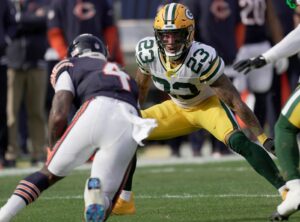Le’Veon Bell is officially considered a holdout after failing to reach terms on a long-term contract extension with the Pittsburgh Steelers. The 25-year-old running back refused to sign his $12.12 million-dollar franchise tag tender and is not reporting to Steelers training camp.
What to Make of Le’Veon Bell’s Holdout
Bell reportedly turned down a five-year offer from the Steelers that would have averaged over $12 million annually. He would have been paid $30 million through the 2018 season and $42 million by the end of 2019. During an interview with ex-Steeler Ike Taylor on NFL Total Access Bell claimed “I want to be paid as a number 1 running back and number two wide receiver. While Bell’s rushing and receiving stats last season help lend some credence to his stance, the facts and more importantly the collective bargaining agreement doesn’t correlate with his stance. As a result, Bell’s biggest advocate, the NFL Players Association, has its proverbial hands tied.
At this point, Bell is betting on his on-field performance to make him the highest paid running back in the league. Perhaps the only drawback is that he’s missed 30 of 70 possible career games since becoming a pro. But nobody can argue with his on-field success. So why won’t this work? When the NFL and NFLPA negotiated the current CBA in 2011, they negotiated positional tags. This includes the franchise tag Bell will be forced to sign when he reports defines his position.
The Problems
A franchise tag means that a particular player will make the average salary of the top five players at that position. NFL teams carry 53 players on the roster during the regular season and have a depth chart as well. These list each player and where they stand on the roster at their position. So it would be impossible for the Steelers to list Bell as their number one running back and their number two receiver. Not to mention, on just about every offensive snap, these skill position players are on the field together at the same time.
Remember, this is a system that the NFLPA agreed to and literally signed off on during the 2011 season. Essentially, the NFLPA agreed to classifying players in this manner. So they cannot backtrack on their word to come to Bell’s aid. There simply is no such thing as listing an athlete as an “offensive player” on an NFL roster. Throw in the fact that the Steelers front office is notorious for not being held hostage by holdouts and suddenly Bell’s argument for being paid as a multi-positional player looks less realistic.
The Outcome
Bell will have to sign the running back franchise tag and report to training camp this season. He’ll make $12.12 million for the season and his on-field production will dictate how negotiations go next off-season. If he churns out another highly productive season, Bell will likely become the highest paid running back of all-time. He would set a new standard for running backs like Ezekiel Elliott and David Johnson when their contract negotiations take place.
If his 2017 performance doesn’t warrant a salary that pays $12 million or more things will get really interesting. Will the Steelers really let Bell walk? The Steelers front office might be forced to franchise tag him for a second straight season. Will the Steelers look to trade him? What is Bell’s value to other teams if he’s essentially two skill position players? Only time will tell. But the 2017 season will have major financial repercussions for Bell, the Steelers, and running backs around the league that could potentially be franchise tagged in the future.






